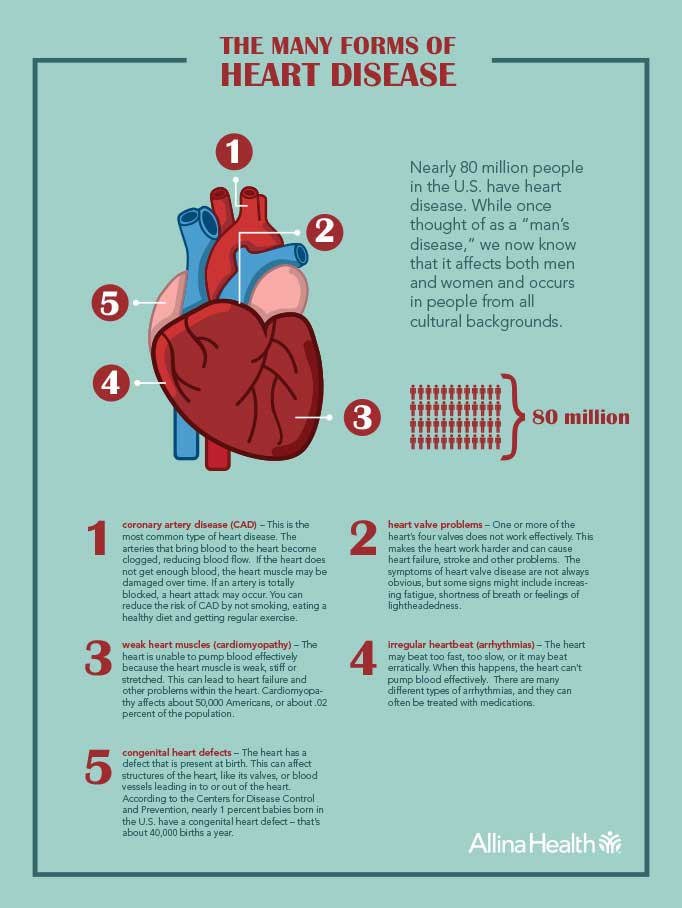HEAL
The many forms of heart disease

Healthy Set Go team
February is Heart Month, a time dedicated to getting the word out about cardiovascular disease—the number one killer of American men and women. While there has been progress in treating heart attacks and other forms of heart disease, much remains to be done. Understanding what heart disease is and learning about your own risks for heart disease is a good place to start.

View text in alternative format.
Nearly 80 million people in the U.S. have heart disease. While once thought of as a “man’s disease,” we now know that it affects both men and women and occurs in people from all cultural backgrounds.
Common types of heart disease include:
- Coronary artery disease (CAD) – This is the most common type of heart disease. The arteries that bring blood to the heart become clogged, reducing blood flow. If the heart does not get enough blood, the heart muscle may be damaged over time. If an artery is totally blocked, a heart attack may occur. You can reduce the risk of CAD by not smoking, eating a healthy diet and getting regular exercise.
- Heart valve problems – One or more of the heart’s four valves does not work effectively. This makes the heart work harder and can cause heart failure, stroke and other problems. The symptoms of heart valve disease are not always obvious, but some signs might include increasing fatigue, shortness of breath or feelings of lightheadedness.
- Weak heart muscles (cardiomyopathy) – The heart is unable to pump blood effectively because the heart muscle is weak, stiff or stretched. This can lead to heart failure and other problems within the heart. Cardiomyopathy affects about 50,000 Americans, or about .02 percent of the population.
- Irregular heartbeat (arrhythmias) – The heart may beat too fast, too slow, or it may beat erratically. When this happens, the heart can’t pump blood effectively. There are many different types of arrhythmias, and they can often be treated with medications.
- Congenital heart defects – The heart has a defect that is present at birth. This can affect structures of the heart, like its valves, or blood vessels leading in to or out of the heart. According to the Centers for Disease Control and Prevention, nearly 1 percent babies born in the U.S. have a congenital heart defect – that’s about 40,000 births a year.
MORE ARTICLES LIKE THIS
